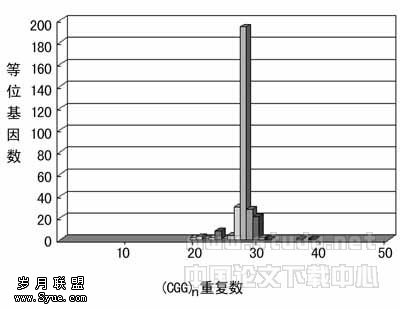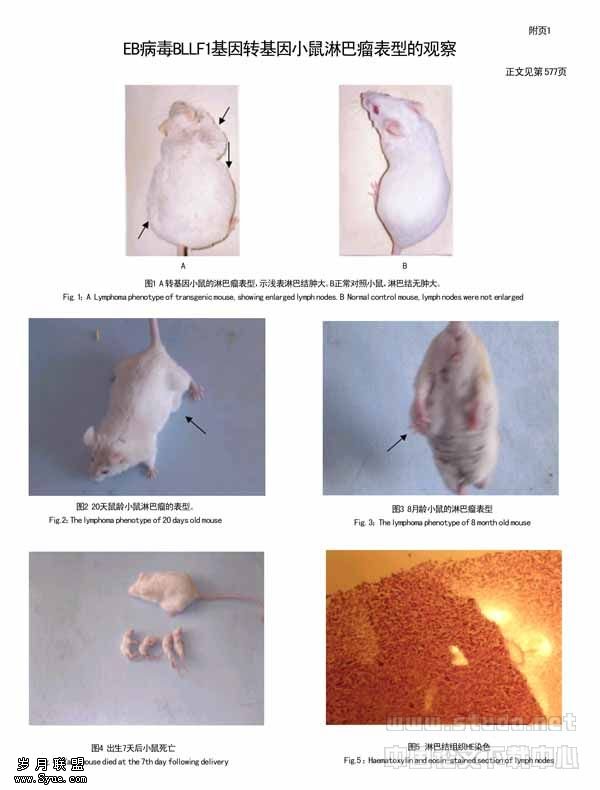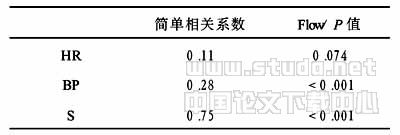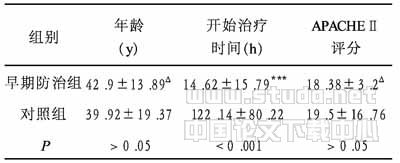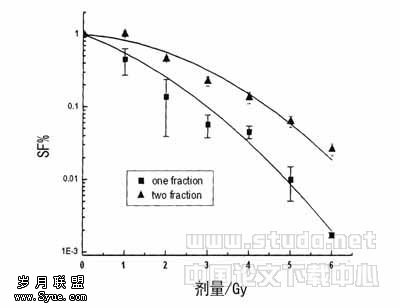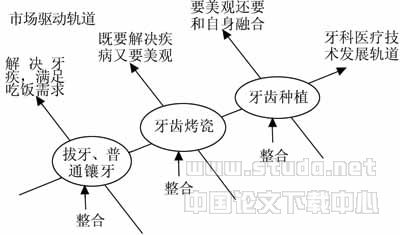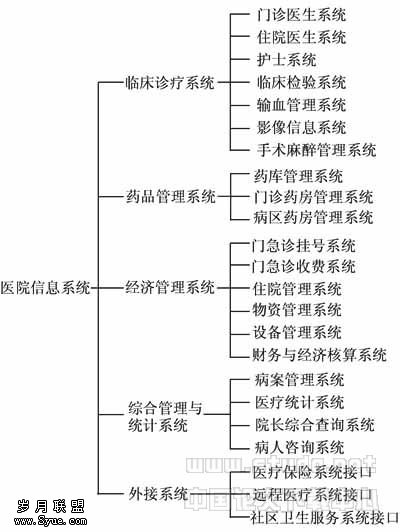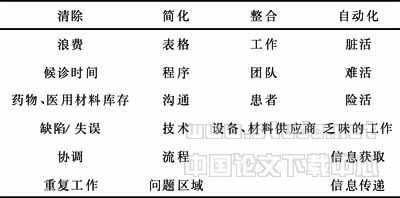肿瘤坏死因子α和雷公藤内酯醇调节Raji细胞内VEGF的表达及基质胶中ECV304细胞血管形成作用的研究
作者:崔国惠, 陈卫华, 薛克营, 刘芳, 陈燕
【摘要】 为了探讨肿瘤坏死因子 (TNF-α )和雷公藤内酯醇作用Raji细胞VEGF(血管内皮细胞生长因子)的表达及VEGF与ECV血管形成的关系, 采用MTT法检测雷公藤内酯醇抑制Raji细胞增殖的影响;用ELISA法对Raji细胞上清的VEGF定量;用基质胶上的内皮细胞形成检测ECV304(人类脐静脉内皮细胞起源的细胞系)血管生成;用RT-PCR检测VEGF mRNA含量。结果表明:雷公藤内酯醇对Raji细胞增殖抑制作用呈时间和剂量依赖方式,最适合作用时间为24小时,24小时半数抑制浓度IC50为25 nmol/L; Raji细胞上清VEGF的含量在TNF-α 组明显高于空白对照组,雷公藤内酯醇处理组则明显低于空白对照组,两者比较有极显著差异(P<0.01); Raji细胞内VEGF mRNA主要为VEGF165和VEGF121,其含量在TNF-α 处理组与空白对照组比较有增加,而雷公藤内酯醇抑制VEGF mRNA表达,并呈剂量依赖方式; Raji细胞上清、VEGF(10 ng/ml)和 TNF-α (10 ng/ml)处理的Raji细胞上清在基质胶中作用ECV304细胞后可促进血管形成,而雷公藤内酯醇(25 nmol/L)处理的Raji细胞上清和1640培养基作为的对照组加入基质胶中ECV304细胞未见血管形成。结论: 在TNF-α 、雷公藤内酯醇作用Raji细胞过程中,TNF-α 促进VEGF的表达而雷公藤内酯醇则抑制其表达; TNF-α 处理的Raji细胞上清在基质胶中促进血管形成,而雷公藤内酯醇则抑制血管形成。
【关键词】 肿瘤坏死因子-α; 雷公藤内酯醇; VEGF; Raji细胞; ECV304细胞; 血管形成
Vascular endothelial growth factor (VEGF) promotes angiogenesis and is associated with the invasion and metastasis of malignant tumours[1]. VEGF promotes acute myelogenous leukemia (AML) cell growth and survival, and may contribute to drug resistance[2,3]. Previous studies showed that TNF-α increased VEGF mRNA expression[4] . Triptolide, a traditional Chinese medicine, has been reported to be effective in the treatment of auto-immune diseases, and it can also induce anti-neoplastic activity on several human tumour cell lines. Triptolide can inhibit VEGF expression[5]. Therefore, to better understand the possibilities of antiangiogenic tumour therapy, we investigate the effect of TNF-α and triptolide on the expression of VEGF in human B lymphoma Raji cells lines, and their effect on angiogenesis in human umbilical vein endothelial cells (HUVECs)-derived cell line (ECV304) to elucidate the mechanisms controlling the process of tumour neovascularization.
Materials and Methods
Drugs and reagents
Recombinant human TNF-α was purchased from Peprotechec, USA (#0604CY25,≥2×107 units/mg). Triptolide (molecular weight 360, from Tripterygium Wilfordii 98% (HPLC) solid ); Matrigel was purchased from Becton Dickinson Labware (Bedford, MA, USA), the Quantikine human VEGF ELISA kit was purchased from R&D Systems (USA). RevertAidAM FirstStrand cDNA Synthesis kit was purchased from Fermentas. Primer pairs were synthesized by BioAsia Biotechnology Co.Ltd.
Cell lines and culture
Raji and ECV304 cells were obtained from China Center for Typical Culture Collection in Wuhan and were grown in RPMI 1640 (Gibco BRL, USA) containing 10% FCS, 2 mmol/L L-glutamine, 100 U/ml penicillin, and 100 U/ml streptomycin at 37℃ in a fully humidified atmosphere with 5% CO2. To test the VEGF production, Raji cells were plated at 105 cells/well in a 6-well plate for 24 hours before the experiment. U937 cells were used at 106 cells/ml.
MTT assay
The antiproliferative effects of triptolide against Raji cells were determined by the MTT dye uptake method as described earlier. Briefly, the cells (40 000 per well) were incubated in triplicate in 96-well plate. Different concentrations of triptolide were added, and the final concentrations were 3.13, 6.25, 12.50, 25.00 and 50.00 nmol/L, then were collected at different times incubated for 12, 24, 36, 48, 60 and 72 hours. MTT assay was performed to determine the proliferative inhibitory rate (PIR).
PIR=(1-average A value of experimental group/
average A value of control group)×100%
Quantification of VEGF Production
To test the VEGF production treated by TNF-α and triptolide, Raji cells were incubated in the presence of TNF-α (10 ng/ml) or triptolide (25 nmol/L). After 24 hours, cell culture supernatants were collected, and VEGF concentrations were determined by ELISA using the Quantikine human VEGF ELISA kit ( R&D Systems, USA). The VEGF protein concentration of each fraction was measured by ELISA (pg VEGF/ml supernatant). VEGF concentration in cell culture supernatant was measured which has been calibrated against a highly purified recombinant human VEGF165. In short, 1 ml of media was centrifuged at 10 000×g for 5 minutes at 4℃, and the supernatant was stored at -70℃ for up to 72 hours. Thawed supernatant (200 μl) was used in the ELISA according to manufacturer's instructions. The absorbance of the samples was determined by using an EXL-800 microplate reader. A serial dilution of human recombinant VEGF was included in each assay to obtain a standard curve from which sample VEGF concentrations were obtained. Computer software Curve Expert 1.3 was used to obtain a standard curve from which sample VEGF concentrations (pg/ml) were obtained.
Matrigel capillary tube formation
This assay was carried out by the method as previously described[6]. Matrigel was purchased from Becton Dickinson Labware (Bedford, MA, USA), diluted to 4 mg/ml with cold phosphate-buffered saline (PBS) and added to 24-well plates in a total volume of 400 μl in each well. Plates were placed at 37℃ for an hour to form a gel layer. After gel formation, a total of 2×105 /ml ECV304 cells were applied to each well and incubated with the supernatants of Raji culture for 24 hours. Experiments were divided into 5 group as follows: (A) untreated group; (B) VEGF (10n g/ml) group; (C) TNF-α (10 ng/ml) group; (D) triptolide(25 nmol/L)group, and (E) control (1640 medium instead of the supernatants of Raji culture ). Plates were incubated at 37℃ for 24 hours with 5% CO2, viewed (magnification ×40) and photographed using an Olympus microscope (Olympus, Japan). At least 5 fields were examined per well; each experimental condition was tested in triplicate.
Reverse transcription-PCR
Total RNA was isolated by TRIZOL reagent (Life Technologies, Inc., USA) according to the manufacturer's instructions. The reverse transcription reaction was performed using the RevertAidTM First-Strand cDNA Synthesis kit (Fermentas, Lithuania, USA). The newly synthesized cDNA was amplified by PCR. The 26.25 μl reaction mixture contained 10×buffer with MgCl2 2.5 μl, 10 mmol/L dNTP 0.5 μl, Taq polymerase (5 U/μl) 0.25 μl, cDNA 1.25 μl,1.25×2 μl of forward and reverse primers 1 (5 pmol/μl), 1?25×2 μl of forward and reverse primers 2(5 pmol/μl)and ddH2O 17 μl .The following primer pairs were designed from human cDNA sequences available in GenBank and synthesized by BioAsia Biotechnology Co., Ltd.; PCR primers were as follows: VEGF, 5'-T- CGGGCCTCCGAAACCATGA-3' and 5'-CCTGGTGA-GAGATCTGGTTC-3'; PCR was carried out at 94℃ for 5 minutes, followed by 34 cycles of 94℃ for 30 seconds, 55℃ for 30 seconds, and 72℃ for 1 minute, with a final extension at 72℃ for 10 minutes, which can amplify all included 516,588,648,720 bp fragment; and β-actin, 5′-TCTACAATGAGCTGCGTGTG-3′ and 5′-CAACTAAGTCATAGTCCGCC-3′, which amplify an 878 bp fragment; Notch1, 5′-GACATCACGGATCATATGGA-3′ and 5′-CTCGCATTGACCA-TTCAAAC-3′, which amplify a 666 bp fragment; PCR was carried out at 95℃ for 2 minutes, followed by 30 cycles of 95℃ for 1 minutes, 60℃ for 2 minutes, and 72℃ for 1.5 minutes, with a final extension at 72℃ for 7 minutes. After amplification, 8 μl aliquots of products were resolved on a 1.7% agarose gel. DNA bands were visualized by UV light and documented with Smart View 2000 software processor. The ratio between the target gene and β-actin gene band densities was used for quantitative evaluation. The data presented is representative of three experiments.
Statistical analysis
Data were presented as mean±SD using SPSS 11.0 statistic software, Paired t-test was used to compare two means from one group and q-test was used for comparison of multiple groups. P value less than 0.05 was considered as statistically significant.
Results
Effects of triptolide on the proliferation of Raji cells by MTT
As shown in Figure 1, Treatment of Raji cells with different concentrations of triptolide for 12, 24, 36, 48, 60 and 72 hours, resulted in significantly enhanced cytotoxicity in dose- and time-dependent manner. After treated with concentration of (3.13, 6.25,12.50, 25.00, 50.00) nmol/L triptolide for 24 hours, inhibitory rates were 12?7%, 15.6%, 31.5% and 52.8%, 53.3% and 60.3% respectively. IC50 value was 25 nmol/L.
Quantification of VEGF production by ELISA
Raji cells released VEGF protein constitutively. As shown in Figure 2. VEGF production was significantly increased by TNF-α, as compared with control (P<0?01). Triptolide reduced the VEGF production compared with control (P<0.01).
VEGF mRNA expression in Raji cells
As shown in Figure 3, after incubation with different concentrations of triptolide (12.5, 25.00, 50.00 nmol/L) for 24 hours, VEGF165 and VEGF121 mRNA could be detected, and the mRNA expression ratios (VEGF121/β-actin) were 0.48±0.08, 0.24±0.01 and 0.05±0.000, respectively, while the mRNA expression ratio (VEGF121 /β-actin) in control group was 0.67±0?015. The mRNA expression ratios (VEGF165/ β-actin) were 0.57±0.01,0.30±0.02 and 0.08±0.01, respectively, while the mRNA expression ratio (VEGF165 /β-actin) in control group was 0.71±0.01. We also tested VEGF mRNA in Raji cells treated by TNF-α (10 ng/ml) , the result showed that compared with the control, TNF-α augmented the expression of VEGF165 mRNA (P=0.00, P<0.01) and VEGF121 mRNA (P=0.007, P<0.01), but triptolide reduced the expression of VEGF165 mRNA (P=0.003, P<0?01) and VEGF121 mRNA (P=0.008, P<0?01) (n=3).
Matrigel network formation assay
After ECV304 cells were seeded on the Matrigel, network formation was initiated in about 24 hours. No network and cord formations were seen in control and triptolide group. There was tube formation on Matrigel in the supernatant of Raji culture group and the supernatants of groups treated by VEGF and TNF-α in Raji cells. No network and cord formations were seen when the 20 ng/ml TNF-α directly added to ECV304 culture (Figure 4).
Discussion
Triptolide, a traditional Chinese medicine, has been reported to be effective in the treatment of auto-immune diseases, and it can also induce anti-neoplastic activity on several human tumour cell lines. This study investigated the cytotoxic function and the functional mechanism of triptolide on Raji cells. The results of study showed that triptolide induced antiproliferative effects on Raji cells, Raji cells released VEGF protein constitutively, VEGF production was significantly increased after treated by TNF-α, compared with control, triptolide reduced the expression of VEGF mRNA in dose-dependent manner, compared with control, and TNF-α augmented the expression of VEGF mRNA. Some reports showed that triptolide, a purified compound from Tripterygium, possessed antitumour properties and induced apoptosis in a variety of malignant cell lines. Chan [7] found that triptolide induced cytotoxic effects on human promyelocytic leukemia, T cell lymphoma and human hepatocellular carcinoma cell lines. TNF-α can up-regulate VEGF expression at the mRNA and protein levels. Koyama [8] reported that BEAS-2B cells and A549 cells released VEGF constitutively. Interleukin IL-1b and tumour necrosis factor TNF-α augmented the release of VEGF in a time- and dose-dependent manner. The released VEGF was VEGF165. Some reports showed that triptolide can inhibit VEGF expression and production [5,9]. Our results were coincident with these reports. After ECV304 cells were seeded on the Matrigel, no network and cord formed in control and triptolide group. There was tube formation on Matrigel in the supernatants of Raji culture group and the Raji culture supernatants treated by VEGF and TNF-α . VEGF can caused endothelial tube formation in HUVECs[10,11]. TNF-α also can caused endothelial tube formation in HUVECs[12]. Our results were coincident with some reports, but there was no tube formation on Matrigel in the Raji cultur supernatants treated by triptolide. Vasculogenesis and angiogenesis are processes of the formation of new vascular networks. VEGF plays a crucial role in angiogenesis. VEGF family members and their receptors seem to have important action during early vasculogenesis and angiogenesis. In our study, only the mRNA expression of VEGF165 and VEGF121 were detected in Raji cells, and We know that the gene for human VEGF is organized into eight exons. As a result of alternative splicing, at least four transcripts encoding mature VEGF have been detected, encoding VEGF containing 121, 165, 189, and 206 amino acid residues (VEGF121, VEGF165, VEGF189, and VEGF206), and a 26 amino acid signal peptide preceeded in each. VEGF121 and VEGF165 are diffusible proteins that are secreted into medium. VEGF189 and VEGF206 have a high affinity for heparin and are mostly bound to heparin-containing proteoglycans in the extracellular matrix. Transfection studies demonstrate that VEGF121 and VEGF165 are secreted and exhibit both mitogenic and peameability-inducing activities, but VEGF189 and VEGF206 remain primarily cell associated and lack the mitogenic activity of the smaller form, suggesting that VEGF165 and VEGF121 are pivotal forms of VEGF[13,14]. Our results were coincident with these reports.Above all, the expressions of VEGF in Raji cells were increased by TNF-α and suppressed by triptolide. VEGF and TNF-α can induce angiogenesis, and triptolide can inhibit angiogenesis in ECV304 cells. This study provides the first evidence for regulation of VEGF gene expression by triptolide and TNF-α and their effects on angiogenesis.
【】
1 Saaristo A, Karpanen T, Alitalo K. Mechanisms of angiogenesis and their use in the inhibition of tumor growth and metastasis. Oncogene, 2000; 19:6122-6129
2 Kossakowska AE, Hinek A, Edwards DR, et al. Proteolytic activity of human non-Hodgkins lymphomas. Am J Pathol, 1998; 152:565-576
3 Vacca A, Ribatti D, Iurlaro M, et al. Human lymphoblastoid cells produce extracellular matrix-degrading enzymes and induce endothelial cell proliferation, migration, morphogenesis, and angiogenesis. Int J Clin Lab Res, 1998; 28:55-68
4 Alagappan VK,McKay S,Widyastuti A,et al. Proinflammatory cytokines upregulate mRNA expression and secretion of vascular endothelial growth factor in cultured human airway smooth muscle cells. Cell Biochem Biophys, 2005; 43:119-130
5 Hu KB,Liu ZH,Liu D,et al. Inhibition of vascular endothelial growth factor expression and production by triptolide. Planta Med, 2002; 68:368-369
6 Kubota Y, Kleiman HK, Martin GR,et al. Role of laminin and basement membrane in the morphological differentiation of human endothelial cells into capillary like structures. J Cell Biol, 1988;107: 1589-1598
7 Chan EW,Cheng SC,Sin FW,et al.Triptolide induced cytotoxic effects on human promyelocytic leukemia, T cell lymphoma and human hepatocellular carcinoma cell lines. Toxicol Lett. 2001;122: 81-87
8 Koyama S, Sato E, Tsukadaira A, et al. Vascular endothelial growth factor mRNA and protein expression in airway epithelial cell lines in vitro. Eur Respir J, 2002; 20: 1449-1456
9 Fukushima K, Miyamoto S, Tsukimori K,et al.Tumor necrosis factor and vascular endothelial growth factor induce endothelial integrin repertories, regulating endovascular differentiation and apoptosis in a human extravillous trophoblast cell line . Biol Reprod, 2005; 73:172-179
10 ChungCH, Wu WB, Huang TF. Aggretin, a snake venom-derived endothelial integrin α2β1 agonist, induces angiogenesis via expression of vascular endothelial growth factor. Blood, 2004;103: 2105-2113
11 Imanishi T, Hano T, Nishio I. Angiotensin II potentiates vascular endothelial growth factor-induced proliferation and network formation of endothelial progenitor cells. Hypertens Res, 2004;27: 101-108
12 Kim YM, Kim YM, Lee YM, et al. TNF-related activation-induced cytokine (TRANCE) induces angiogenesis through the activation of Src and phospholipase C (PLC) in human endothelial eells. J Biol Chem, 2002; 277:6799-6805
13 Tischer E, Mitchell R, Hartman T, et al. The human gene for vascular endothelial growth factor. Multiple protein forms are encoded through alternative splicing. J Biol Chem, 1991;266:11947-11954
14 Houkt KA, Ferrara N, Winer J, et al. The vascular endothelial growth factor family: identification of a fourth molecular species and characterization of alternative splicing of RNA. Mol Endocrinol, 1991;5:1806-1814.


